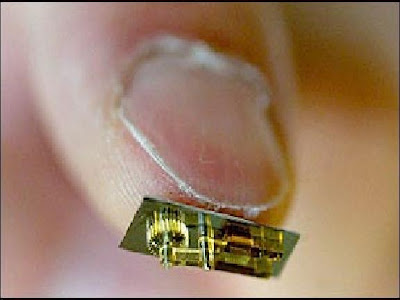
SCIENTISTS have built the smallest petrol engine - tiny enough to power a
WATCH.
The mini-motor, which runs for two years on a single squirt of lighter fuel, is set to
revolutionise world technology.
It produces 700 times more energy than a conventional battery despite being
less than a centimetre long - not even half an inch. It could be used to operate
laptops and mobile phones for months on end - doing away with the need for
recharging.
Experts believe it could be phasing out batteries in such items within just six
years.
Engineers at the University of Birmingham have produced the engine; minute
enough to be balanced on a fingertip. Dr Kyle Jiang, lead investigator from the
Department of Mechanical Engineering, said: “We are looking at an industrial
revolution happening in peoples’ pockets.
“The breakthrough is an enormous step forward. Devices which need re-
charging or new batteries are a problem but in six years will be a thing of the
past.”
Other applications for the engine could include medical and military uses, such
as running heart pacemakers or mini reconnaissance robots. At present,
charging an ordinary battery to deliver one unit of energy involves putting 2,000
units into it.
The little engine, because energy is produced locally, is far more effective.
One of the main problems faced by engineers who have tried to produce micro
motors in the past has been the level of heat produced.
The engines got so hot they burned themselves out and could not be re-used.
The Birmingham team overcame this by using heat-resistant materials such as
ceramic and silicon carbide.
Professor Graham Davies, head of the university’s engineering school, said:
“We’ve brought together all the engineering disciplines, both materials, chemical
engineering, civil engineering, and mechanical engineering.
“What better place to have the second industrial revolution - in nano-technology -
than where the first took place, in the heart of the West Midlands.”

